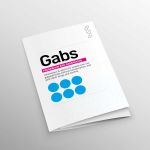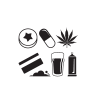Page contents
On this page
What are gabapentinoids?
Pregabalin and gabapentin, known as gabs, are prescription-only medicines used to treat certain medical conditions. Gabapentin is sold as Neurontin or Gralise; pregabalin as Lyrica.
They usually come as capsules in a range of colours and strengths. Pregabalin acts faster and feels stronger than gabapentin, which can increase the risk of overdose.
What are they prescribed for?
- Nerve pain
- Epilepsy
- Anxiety (pregabalin only)
Side effects can include chest pain, swelling of the feet, dizziness, or drowsiness. Gabapentinoids should be avoided during pregnancy unless prescribed by a doctor.
Using gabs without a prescription
Some people get gabs from unregulated sources such as another person’s prescription or online sellers. This is risky because you can’t be sure of the strength, purity, or ingredients. Watch out for pills that look unusual, taste strange, or come in inconsistent packaging.
How are they used?
Most people swallow gabs. Some snort them in powder form, which increases irritation and overdose risk. If you snort gabs, use your own device and rinse your nose after each session.
How gabs make you feel
People use gabs to feel relaxed or euphoric, or to help with stress, sleep, or the comedown from other drugs. At higher doses they can make you feel more sociable or less anxious. Some people also report vivid thoughts or visual images. These effects can feel good, which makes it easy to take too much.
Gabapentinoids and overdose
Gabs are downers: they slow your brain and body. When mixed with other downers, the sedative effects build up and can cause serious breathing problems, slow your heart rate even more, and increase the risk of overdose. They are often found in overdose deaths, usually with other drugs. Pregabalin is stronger than gabapentin and carries a higher overdose risk.
Heroin, benzos and alcohol
Gabs boost the effects of heroin, benzodiazepines, and especially alcohol. This can make you very drowsy, unsteady or confused, greatly increasing the risk of breathing problems and overdose.
Fentanyl or nitazenes
Potent synthetic opioids can be hidden in street drugs. Taking them with gabs makes overdose far more likely.
Ketamine
Mixing gabs with ketamine can cause heavy sedation and confusion, which can lead to blackouts, breathing problems and overdose.
If you’re on methadone or Subutex (buprenorphine)
Gabs increase the sedative effects of methadone or Subutex, slowing your breathing and making you very drowsy or confused. The risk is higher if you’re new to treatment, have low tolerance, take high doses (especially pregabalin), or use other depressants.
Addiction and withdrawal
You can become dependent on gabs, particularly with regular use or high doses. If you stop suddenly, you might get withdrawal symptoms. In rare cases this can lead to a seizure. The risk is higher if you’ve used large amounts or had seizures in the past.
Common withdrawal symptoms include anxiety, poor sleep, nausea, pain, diarrhoea, and heavy sweating.
Reducing gabs safely
If you’ve been using gabs regularly, don’t stop suddenly. It can cause withdrawal symptoms and, in some cases, seizures. The safest way to cut down is to go slowly and get help from a doctor, drug worker, or pharmacist.
- Lower your dose gradually to avoid withdrawal.
- Reduce by 10–25% every week or two.
- Go slower or pause if symptoms get worse.
- If you’re using both drugs, many people find it easier to reduce pregabalin first.
Reduce the risks
- Don’t use alone — keep an eye on each other.
- Start with a small amount and wait at least an hour before taking more.
- Don’t use gabs in clubs or bars.
- Never mix with other downers like opioids, benzos, or alcohol.
- Never inject gabs.
- If you or your mates use heroin or methadone, always carry naloxone and know how to use it.
- Avoid using during pregnancy unless prescribed.
- Don’t use daily — take regular breaks if you plan to use.
- Don’t drive or use machinery — you might be more out of it than you realise.
Helping somebody who’s overdosed
If you’re with someone who’s taken drugs, watch for overdose signs:
- Won’t wake up (even with a shake or shout)
- Laboured, noisy or difficult breathing
- Vomiting
- Pale skin or blue lips
- Irregular or weak heartbeat
In an emergency
- Call 999 immediately
- Put them in the recovery position
- Stay with them and monitor breathing and pulse
- Don’t assume they’re fine if they come round — they could still worsen later
The law
It’s illegal to possess gabs without a prescription, or to give, sell or share them — even with a friend. Gabs without a prescription are Class C drugs under the Misuse of Drugs Act.
It’s also illegal to drive if gabs affect your ability, even if they’re prescribed. If you’re not sure how they affect you, don’t drive.
Further information and support
Gabapentinoid resources
Browse our printed gabapentinoid leaflets and posters
Gabapentinoid resources
Talk to Frank
24-hour confidential drug advice for young people, parents and carers
📞 0300 123 6600
www.talktofrank.com
Release
Specialist drugs and legal advice
📞 020 7324 2989
www.release.org.uk
DrugWise
Evidence-based information on drugs, alcohol and tobacco
www.drugwise.org.uk
Crew (Scotland-based, UK-wide resources)
harm reduction information and support
www.crew.scot








